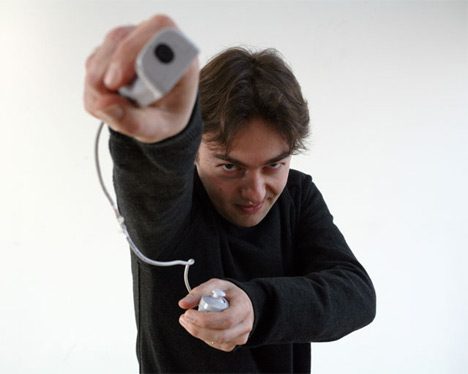CNN recently posted a story on the advances of motion sensing technology — more specifically, how this technology has become cheaper and more effective, making it possible for Sony and Nintendo to incorporate it in the PS3 and Wii.
So, how exactly does motion sensing tech work? What allows for the precision required to implement this feature in a game controller? A spring, that’s what. Here’s what Benedetto Vigno, head of the unit at STMicroelectronics NV in Switzerland (they manufacture motion sensing chips for the Nunchuck) has to say on the subject:
The technology is a wonder of miniaturization and precision. Here’s how Benedetto Vigna, head of the unit at Switzerland-based STMicroelectronics NV, which makes a motion-sensing chip for Nintendo, explains how it works:
When you wave around the new Nintendo controller, two tiny, flat pieces of silicon inside it, each weighing about a millionth of a gram, flex against silicon springs that hold them in place.
The movements are minute, or to put it another way, they’re on the scale of 10 to 100 hydrogen atoms stacked side by side.
Hit the jump for more.
But these tiny movements can be measured with incredible accuracy. A charge is applied between the moving pieces of silicon and two nearby sensors. Faint fluctuations in that charge, as small as that of 10 electrons, are picked up by a chip that translates it into an understanding of how the controller is moving.
The two moving weights, which fit together on an area less than a millimeter square, have different roles. One has two sets of springs, which allow it to move from side to side and back and forth. The other weight is a flat piece anchored almost like trampoline. It senses vertical movement. This way, the chip can distinguish motion in all three dimensions of space.
A similar chip is made by Analog Devices Inc. of Norwood, Massachusetts, for the Wiimote.

Of course, Nintendo isn’t the only console developer with motion sensing tech built into their console. There’s this other gizmo … a SIXAXIS, I think it’s called? Anyone heard of it? Sony didn’t comment on who manufactured their PS3 controller’s accelerometer, but here’s an interesting piece of information:
Accelerometers have been used to guide missiles and aircraft, said Richard Marks, who worked on an underwater robot before his job as head of special projects at Sony Computer Entertainment America.
“We had a $25,000 inertial system that was probably comparable,” to the one in the Sony controller, he said. “These things have become so much less expensive.”
Once again, you can check out the entire story here. It’s pretty interesting, and for all you techno-geeks out there, it should compliment the Engadget story nicely.





Published: Nov 21, 2006 09:45 pm